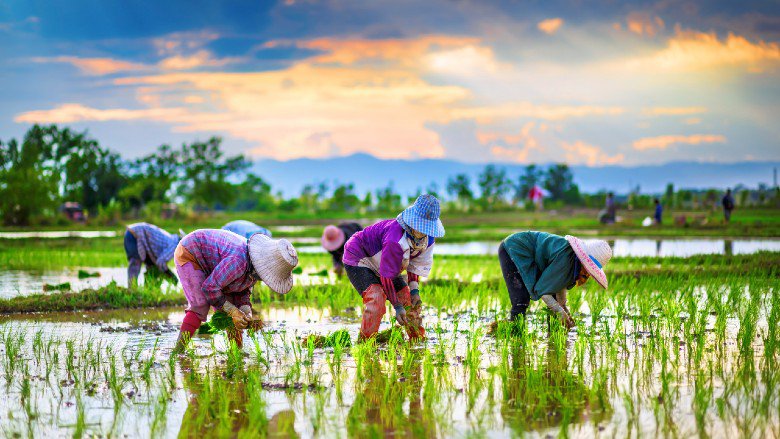Key findings
In the past three decades, Thailand has made remarkable progress in reducing poverty, though inequality remains high. The progress in poverty reduction started slowing from the early 2010s onwards, and poverty differences between regions remain large.
- Driven by high growth rates and structural transformation, the national poverty rate fell from 58 percent in 1990 to 6.8 percent in 2020.
- From 2015 and onwards, Thailand’s progress in poverty reduction slowed, with poverty increasing in the years 2016, 2018 and 2020. This mirrored a slowing economy, stagnating farm and business incomes, and the COVID-19 crisis.
- In 2020, the poverty rate was over 3 percentage points higher in rural areas than in urban zones and rural poor outnumbered urban poor by almost 2.3 million.
- The majority of the poor (79 percent) live in rural areas, mainly in agricultural households.
- The distribution of poverty is uneven across geographic regions with the poverty rate in the South and Northeast almost double the national level.
With an income Gini coefficient of 43.3 percent in 2019, Thailand had the highest income inequality level in East Asia.
- In 2019, the average monthly income of rural households was around 68 percent of urban households.
- Rural households in the Northern regions have the lowest average income.
- The average income level of rural households in the Central region (excluding transfers) is over 60 percent higher than that of rural households in the North and Northeast.
- In the South, it is about 50 percent higher than in the North and Northeast.
- People in rural households continue to suffer from low levels of formal education, a larger number of dependents, and difficult living conditions.
The report identifies three key constraints which need to be addressed to fully realize the potential to increase rural farm incomes. These constraints include 1) improving agricultural productivity, 2) supporting crop diversification, and 3) improving access to markets. Priority actions to overcome key constraints in the next 5–10 years include:
- Measures to increase agricultural productivity. These include: 1) expanding access to irrigation and promoting the adoption of water efficient irrigation methods, 2) promoting risk mitigation strategies to cope with increasing weather volatility among farming households, 3) facilitating access to finance, and 4) strengthening agricultural research and development (R&D).
- Measures to support access to markets. These include: 1) expanding rural infrastructure to strengthen the connection between farmers and markets and 2) promoting the development of e-commerce to create new opportunities to raise incomes.
- Policy and institutional reforms to enhance efficiency of resource use and productivity. These include: 1) strengthening tenure security, 2) adopting optimal water pricing schemes and 3) reviewing the use of policies which provide unconditional farm assistance.
- Cross-cutting policy measures related to skills development. These include: 1) strengthening the knowledge and capacity of farmers, 2) promoting digital literacy and strengthening the adoption of digital technologies, and 3) leveraging existing farmer institutions to enhance social learning.
This rural income diagnostic examines the challenges and explores the opportunities to improve the incomes and productivity of poor and vulnerable households in rural Thailand. The analysis focuses on farming households given their higher poverty rate and vulnerability. The findings from this report are synthesized from several national data sets and analyses and benchmarked against other upper-middle income country peers in Southeast Asia. The diagnostic also builds on extensive consultations with academia and relevant government ministries.
